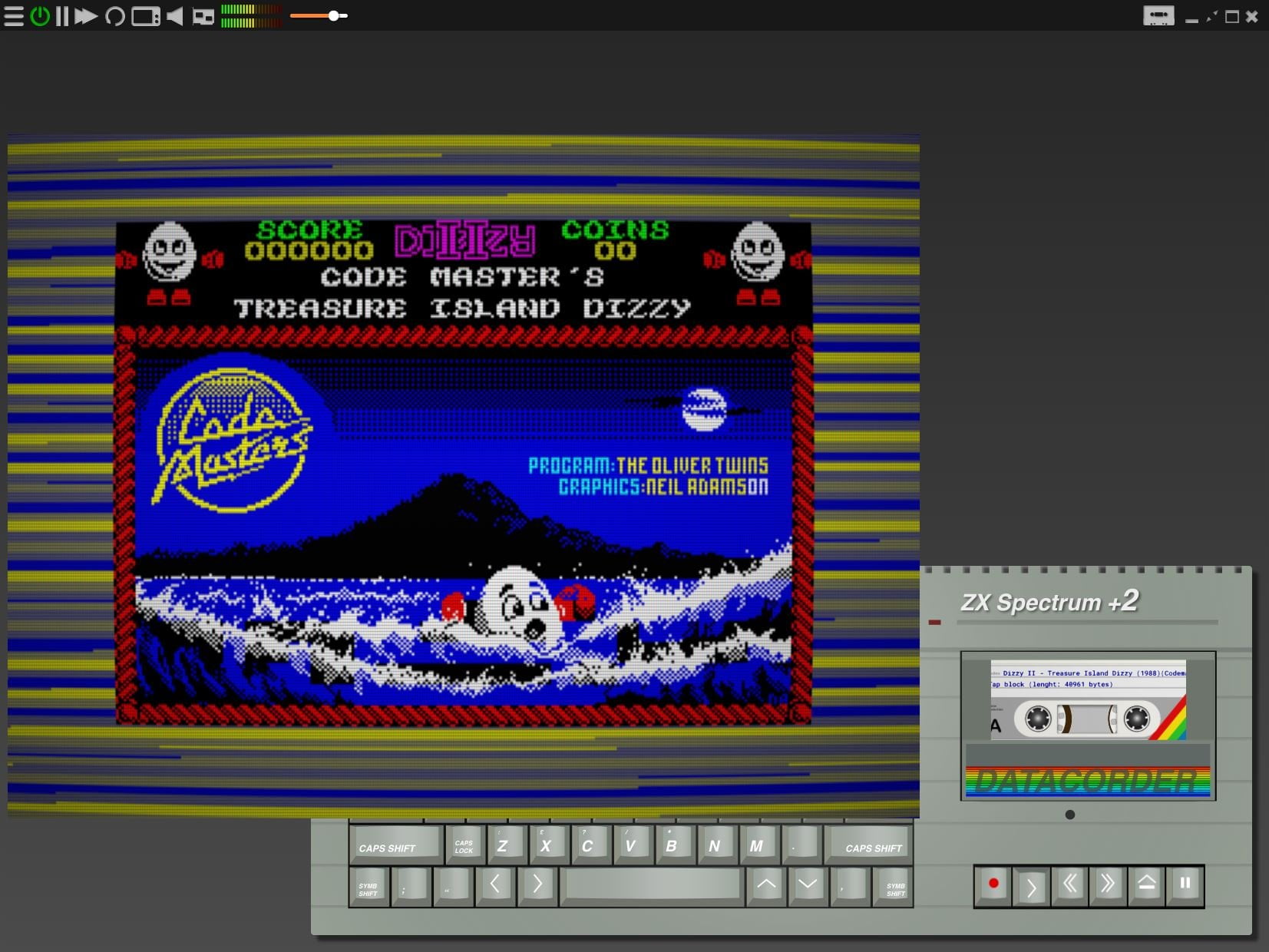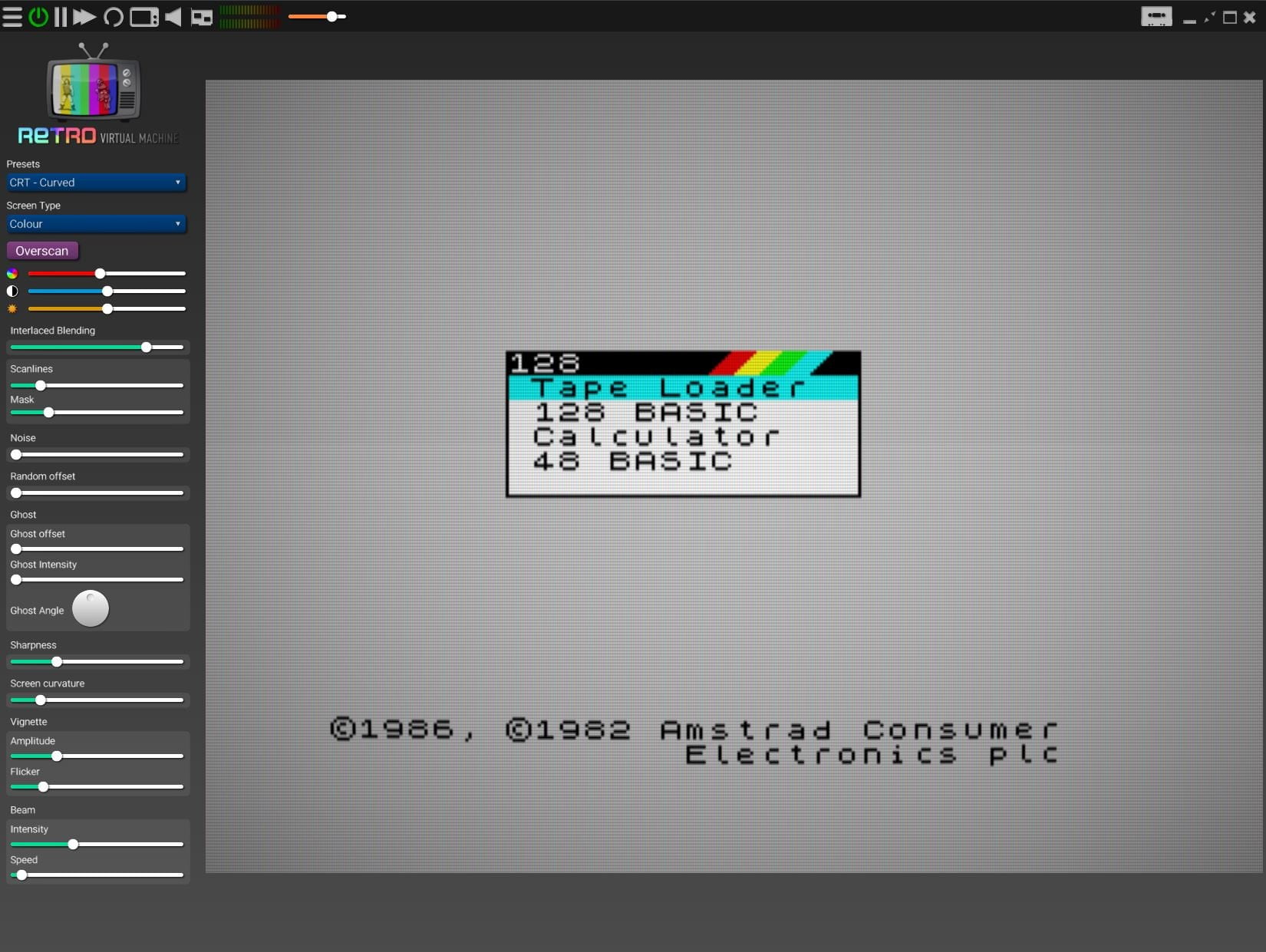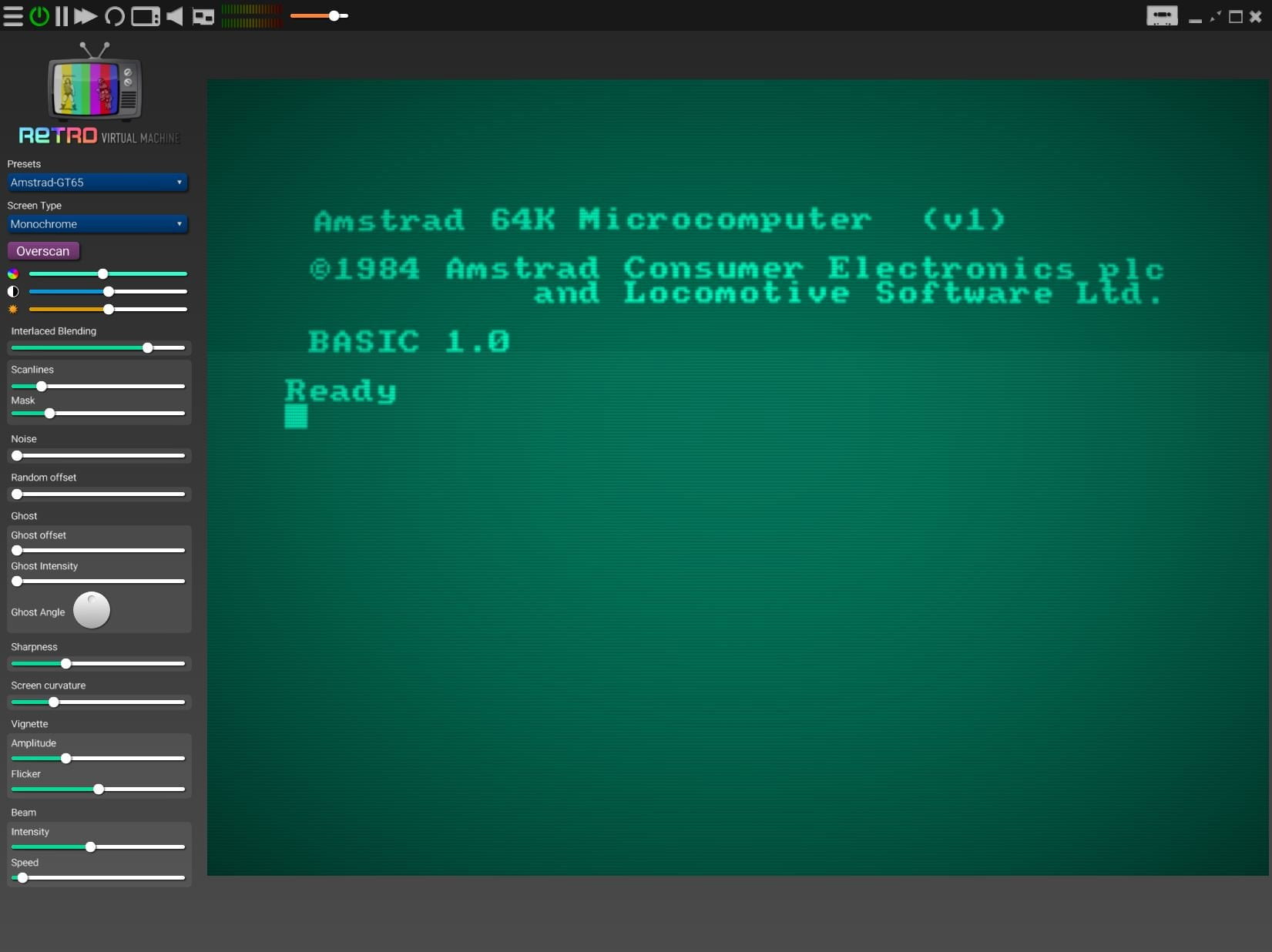I first became aware of Retro Virtual Machine through a YouTube comment, it is an emulator which currently offers emulation for the ZX Spectrum & Amstrad CPC.
My immediate impression upon checking out the website (https://www.retrovirtualmachine.org/) is that It looks as though it’s designed for both casual retro enthusiasts and those who enjoy tinkering to great detail, something which is largely missing from the retro emulation scene.
Not only does it have fun features such as a virtual cassette player, but they also advertise the fact Retro Virtual Machine has the ability to add external devices to your machine, such as virtual SD cards, the Turbo Sound interface for the ZX Spectrum as well as being able to add more RAM to your Amstrad CPC.
Retro Virtual Machine is certainly looking like it could tick the boxes at both ends of the Spectrum (pun totally intended!).

Upon booting, you are first greeted with a blank canvas. One thing to understand with Retro Virtual Machine is that you need to ‘create’ a machine by clicking the menu icon and then ‘Create Machine’.
You then work through the wizard to create the ZX Spectrum or Amstrad CPC system you want to emulate. There’s a really good selection of different variances of each system to choose from here.
Once you’ve saved your system, you simply click the power button to switch it on. The first thing I noticed was the CRT effect in place by default, obviously, this is not to everyone’s taste, but don’t worry, you’ll find stacks of screen effects that can easily be manipulated to your preference.
I particularly liked the ghosting and flicker settings to help recreate that old RF connection to your TV! I have to say this has been implemented in a really nice way and will attract both experienced and more casual users.

A quick click on the tape icon will reveal the virtual cassette player. This is such a cool feature in the way it has been implemented into the emulator. All you need to do is have a TAP file for your system. Here I’m using SWIV for the ZX Spectrum. When you select your tape, you even get a labelled cassette that appears in the tape player.
It’s all about recreating the actual experience of using an older system. So you’ll just need to do the usual load commands for your system, then click the play button on the tape player. You then see and hear the tape whirring effect. You even see the tape move across the reels as the game is loading, another really nice touch.
To save you from waiting the long load times, Retro Virtual Machine has the ability to fast forward which is very useful. The one thing I did find with multiloader tapes is that you need to be careful to stop the tape when prompted otherwise you can lose your position for when the next block needs to be loaded, so use it with care!
If you do lose track, you can click the pause button which shows each section of the tape loader, which you can just then click on and the tape will rewind automatically to that point, very useful!
For me, emulation of the Amstrad CPC is a little less accessible than the ZX Spectrum so I will be using this now as my go-to standalone CPC emulator. You’ve even got the classic Amstrad green screen if you want to go that far!

All in all, I’ve found Retro Virtual Machine a really enjoyable experience. It probably won’t attract those who like to have all their systems emulated in one place like with Retroarch, but as a standalone emulator, this really brought back some of the joys of actually using the systems. It’s obviously as much about the experience as it is the emulation.
This is an excellent emulator project by developer Juan Carlos and I look forward to seeing further updates. Be sure to check out the Retro Virtual Machine website which is included in the description to try out the emulator for yourself.
Retro Virtual Machine Website – https://www.retrovirtualmachine.org/

A lifelong avid gamer and computing enthusiast, Matt has decades of Retro Gaming experience. Now over 40 years old, Matt now even considers himself retro, but fortunately, nobody has developed a Matt emulator (not yet at least!).